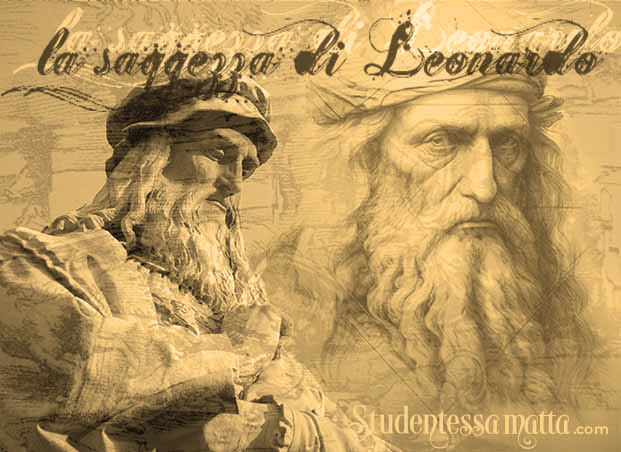
La saggezza di Leonardo da Vinci
The wisdom of Leonardo da Vinci
Leonardo da Vinci era un uomo eccezionale. L’epitome dell’uomo iconico del Rinascimento, era un maestro in vari campi, tra cui pittura, scultura, architettura, ingegneria, matematica, musica e letteratura. Aveva una capacità straordinaria di combinare conoscenze artistiche e scientifiche per creare opere d’arte belle e proporzionalmente accurate. Ciò che distingue Leonardo dagli altri uomini, allora e ora, sono la sua insaziabile curiosità e la sua attenta osservazione. Desiderava profondamente apprendere e comprendere quanto più possibile del mondo fisico. Si impegnava costantemente per esplorare nuove idee e migliorare le sue abilità in vari campi. A tal fine, Leonardo registrò meticolosamente le sue osservazioni nei quaderni, noti anche come codici usando disegni, note scritte ed equazioni matematiche.
Leonardo da Vinci was an exceptional human. The epitome of the iconic Renaissance man, he was a master in various fields, including painting, sculpture, architecture, engineering, mathematics, music, and literature. He had an extraordinary ability to combine artistic and scientific knowledge to create beautiful and proportionally accurate works of art. What sets Leonardo apart from other men, then and now, is his insatiable curiosity and his keen observational skills. He deeply desired to learn and understand as much as possible about the physical world. He constantly pushed himself to explore new ideas and improve his skills in various fields. To this end, Leonardo meticulously recorded his observations in notebooks, also known as codexes using drawings, written notes, and mathematical equations.
Dovremmo essere tutti curiosi come Leonardo. Potremmo prendere tutti una pagina dai taccuini di Leo e seguire il suo consiglio! Ecco una breve storia di Leonardo da Vinci e un po’ della sua saggezza.
We should all be as curious as Leonardo. We could all take a page from one of Leo’s notebooks and follow his advice! Here is a brief history of Leonardo da Vinci and some of his wisdom.
Leonardo Da Vinci nacque il 15 aprile 1452, nel piccolo borgo di Vinci, lontano dalle grandi città. Il posto in cui è nato non era più grande di un pollaio. Da bambino inizia la sua passione per le macchine e i gadget perché era affascinato dal mulino del paese. Una piccola casa è stata costruita su un flusso veloce che contiene una macchina meravigliosa. Mentre l’acqua scorreva, causava la rotazione delle pale di legno di una turbina, incanalando energia cinetica per macinare il grano in farina. E proprio come un mulino ad acqua continuamente girato dal flusso costante di acqua, la mente fluida di Leonardo è stato messo in moto, e ha iniziato costantemente alla ricerca di nuove conoscenze ed esperienze.
Leonardo Da Vinci was born on April 15, 1452, in the small village of Vinci, far from the big cities. The place he was born in was no bigger than a chicken coop. As a child, his passion for machines and gadgets began because he was fascinated by the village mill. A small house was constructed over a fast-moving stream containing a marvelous machine. As the water flowed by, it caused the wooden paddles of a turbine to turn, channeling kinetic energy to grind grain into flour. And just as a watermill continuously turned by the constant flow of water, Leonardo’s fluid mind was set in motion, and he began constantly seeking out new knowledge and experiences.
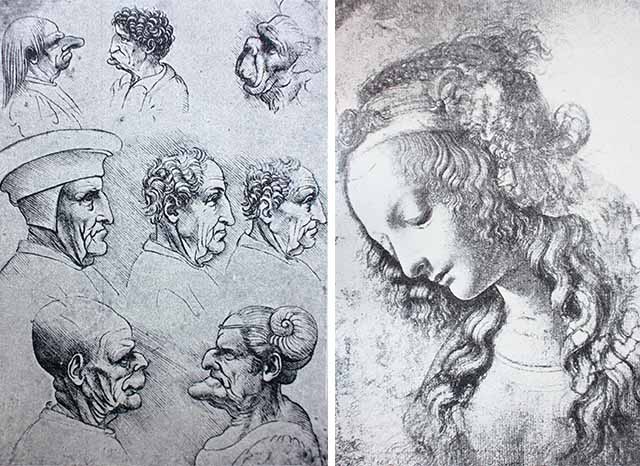
Era lo zio di Leonardo, si chiamava Francesco, che gli diede una penna e gli disse di disegnare. E così via! Leonardo cominciò a disegnare tutto ciò che vedeva, dal paesaggio dalla valle dell’Arno ai volti della gente — i brutti e i belli.
Leonardo’s uncle, Francesco, gave him a pen and told him to draw. And away he went! Leonardo began to draw everything he saw, from the Arno valley’s landscape to people’s faces — the ugly and the beautiful.
Leonardo da Vinci credeva che la bellezza fosse essenziale per l’arte, la natura e l’esperienza umana. Vedeva la bellezza come un riflesso dell’ordine naturale e dell’armonia dell’universo. Credeva che potesse elevare lo spirito umano e ispirare gioia e meraviglia. Allo stesso tempo, Leonardo riconobbe anche un lato oscuro della vita. Quella bruttezza, decadenza e imperfezione erano aspetti inevitabili del mondo naturale. La bellezza era più bella quando contrastava con il brutto, e le malformazioni erano più orribili rispetto a qualcosa di divinamente proporzionale. Credeva che fosse compito dell’artista catturare e rappresentare questi aspetti della realtà e usarli per creare un senso di equilibrio e contrasto nelle loro opere d’arte.
Leonardo da Vinci believed beauty was essential to art, nature, and the human experience. He saw beauty as a reflection of the natural order and harmony of the universe. He believed it could elevate the human spirit and inspire joy and wonder. At the same time, Leonardo also recognized a dark side to life. That ugliness, decay, and imperfection were inevitable aspects of the natural world. Beauty was more beautiful when contrasted with the ugly, and malformations were more horrific when compared to something divinely proportional. He believed that it was the artist’s role to capture and represent these aspects of reality and to use them to create a sense of balance and contrast in their works of art.
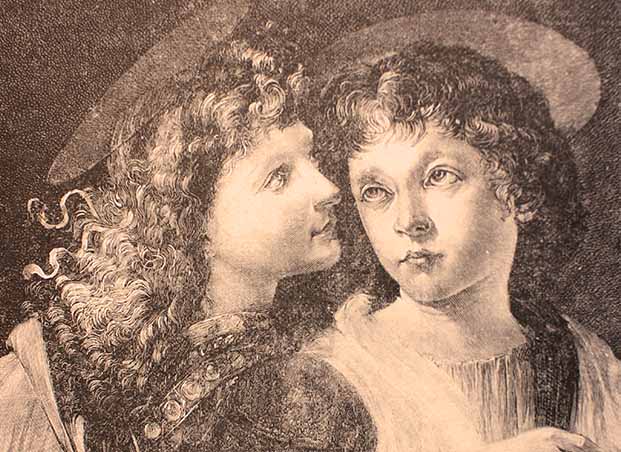
Il padre fu colpito dalle capacità artistiche del figlio e decise che Leonardo avrebbe dovuto studiare a Firenze sotto la guida dell’artista Andrea del Verrocchio. Il Maestro fiorentino, ha avuto un ruolo significativo nella prima evoluzione artistica di Leonardo. Permise anche a Leonardo di dipingere una coppia di angeli in una delle sue opere più celebri, “Battesimo di Cristo.” Si racconta che quando Verrocchio vide l’angelo di Leonardo, l’artista maestro fu talmente colpito dalla bravura e dalla creatività del suo apprendista che decise di rinunciare del tutto alla pittura. Fu umiliato e, credendo di non poter mai eguagliare il talento del suo studente, dichiarò di non avere più nulla da insegnargli. Questo può essere apocrifo, ma i due artisti avevano una stretta relazione influente.
His father was impressed by his son’s artistic abilities and decided Leonardo should study in Florence under the artist Andrea del Verrocchio. The Florentine Master played a significant role in shaping Leonardo’s early artistic development. He even allowed Leonardo to paint a pair of angels in one of his most famous works, “Baptism of Christ.” It is said when Verrocchio saw Leonardo’s angel, the master artist was so impressed by his apprentice’s skill and creativity he decided to give up painting altogether. He was humbled and, believing he could never match his student’s talent, declared he had nothing more to teach him. This may be apocryphal, but the two artists had a close influential relationship.
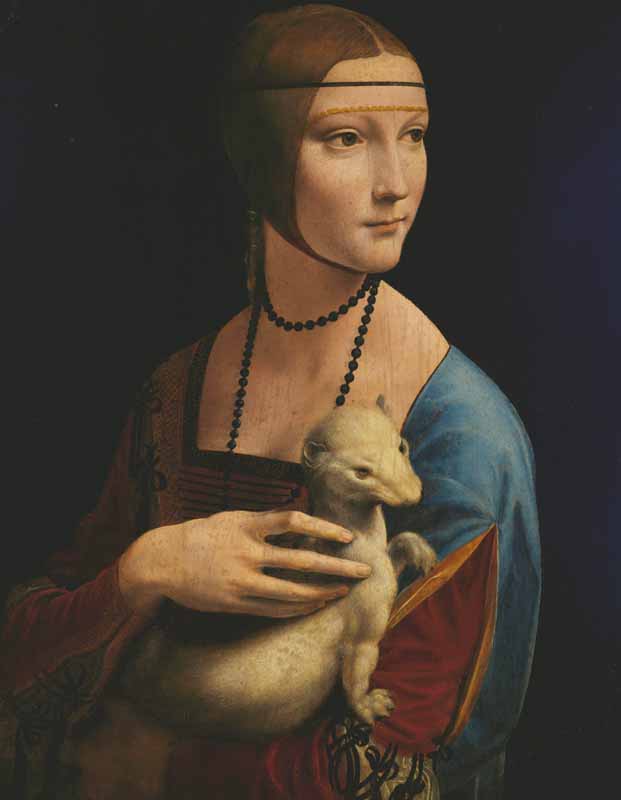
Il talento di Leonardo si fa presto conoscere a Firenze e Milano, attirando l’attenzione di mecenati facoltosi e colleghi artisti. Con l’aumentare della sua reputazione, fu incaricato di dipingere molti ritratti, tra cui quello di Cecilia Gallerani, una nobildonna milanese e amante di Ludovico Sforza. L’ermellino che tiene in grembo è direttamente correlato al cognome della signora, che in greco è “galê.” Un ermellino era spesso usato come emblema di Ludovico. Nei bestiari medievali, un ermellino rappresentava le virtù dell’equilibrio e della moderazione. Leonardo combinò abilmente questi elementi e catturò l’inclinazione della testa e l’inclinazione degli occhi dell’animale e della donna allo stesso modo. Come dimostra questo dipinto, la mente fertile di Leonardo costantemente cercato connessioni intelligenti… e puoi scommettere che ha passato il tempo a studiare il cranio dell’animale e la sua morbida pelliccia di seta prima di dipingere questo ritratto.
Leonardo’s talents quickly became known in Florence and Milan, attracting the attention of wealthy patrons and fellow artists. As his reputation grew, he was contracted to paint numerous portraits, including the one above of Cecilia Gallerani, a Milanese noblewoman and mistress of Ludovico Sforza. The ermine she holds in her lap is directly related to the lady’s surname, which in greek is “galê.” An ermine was also frequently used as Ludovico’s emblem. In medieval bestiaries, an ermine represented the virtues of balance and restraint. Leonardo cleverly combined these elements and captured the tilt of the head and the slant of the eyes of the animal and the woman similarly. As demonstrated by this painting, Leonardo’s fertile mind constantly sought out clever connections… and you can most certainly bet he spent time studying the skull of the animal and its soft silky fur before painting this portrait.
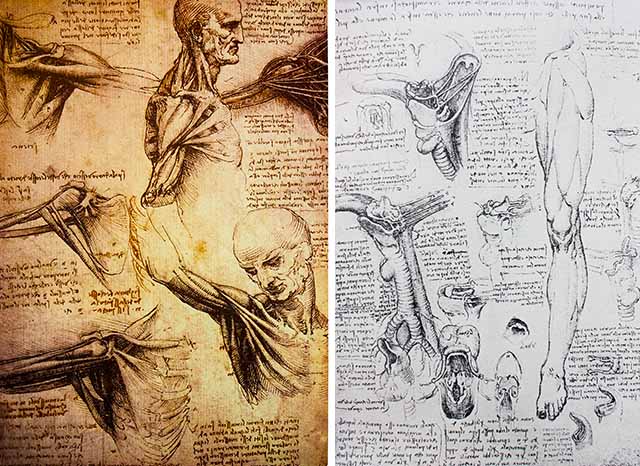
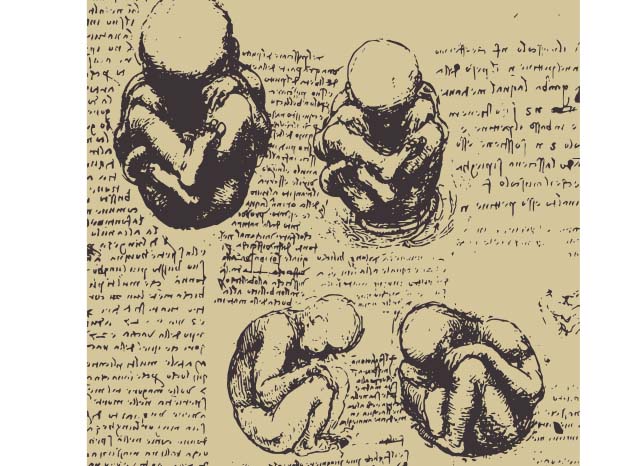
Non si può eseguire un dipinto magistrale del corpo umano senza averlo studiato. Così Leonardo studiò l’anatomia dei corpi morti di animali, giovani, vecchi e donne. Ha anche disegnato gli organi interni finché non è stato proibito continuare. Sebbene possano aver contribuito al progresso della medicina, i disegni di Leonardo sono stati dimenticati per circa 400 anni.
You can’t execute a masterful painting of the human body without having studied it. Thus Leonardo studied the anatomy of dead bodies of animals, young, old, and women. He also drew the internal organs until it was forbidden to continue. Although they may have contributed to medical progress, Leonardo’s drawings were forgotten for nearly 400 years.
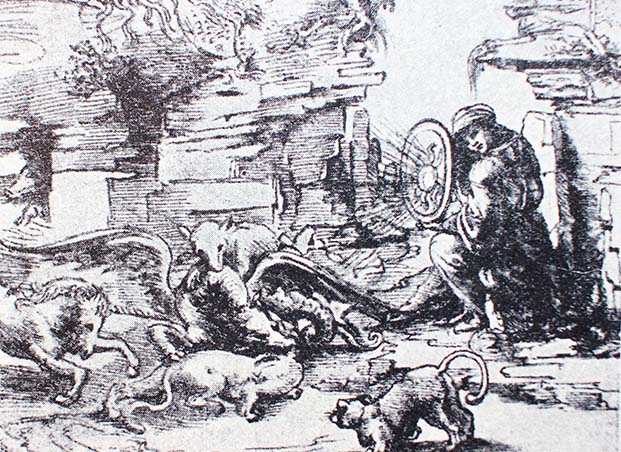
Leonardo ha sempre avuto idee sorprendenti. Usava il suo ingegno per creare immagini fantastiche come unicorni, o creature misteriose come elefanti che suonava istrumenti musicale, mostri marini, Nettuno il re del mare, draghi e teste mostruose. Ha disegnato grandi e imponenti cavalli da guerra, ma anche i piccoli felini che ha fatto non erano per lo sconto e hanno avuto il potere di essere un capolavoro.
Leonardo always had surprising ideas. He used his wits to create fantastic images like unicorns or mysterious creatures like elephants that played musical instruments, sea monsters, Neptune the sea king, dragons, and monstrous heads. He drew large and impressive war horses, but even the little felines he made were not for the discount and had the power to be a masterpiece.
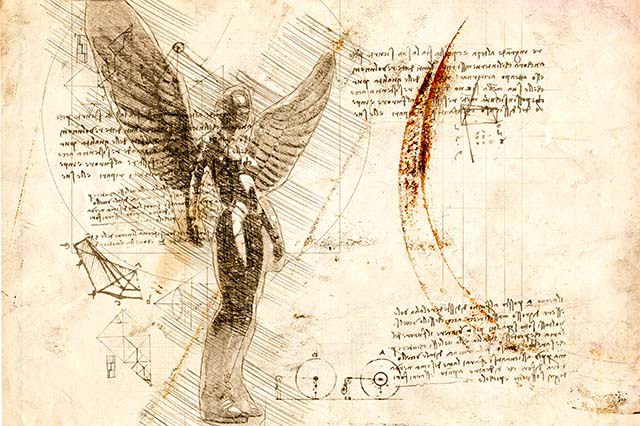
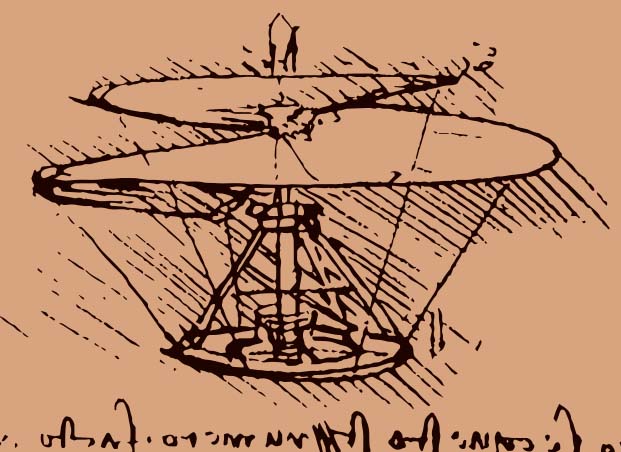
Leonardo sognava di volare, e forse l’idea di avere la libertà totale lo colpì e alimentò la sua voglia di inventare gadget volanti in modo che potesse visitare terre lontane e vedere creature e persone misteriose. La leggenda narra che vagasse per le strade di Firenze con una lucertola sulle spalle. Una volta al mercato, quando Leonardo vide gli uccelli in gabbia, li comprò tutti e li liberò immediatamente e li guardò con soddisfazione mentre volavano via. Disse: “Se solo fossi uno di loro.”
Leonardo dreamed of flying, and maybe the idea of having total freedom struck him and fueled his desire to invent flying gadgets so that he could visit far-off lands and see mysterious creatures and people. Legend has it that he wandered the streets of Florence with a lizard on his shoulders. Once at the market, when Leonardo saw birds in cages, he bought all of them and immediately set them free and watched in satisfaction as they flew away. He said, “If only I were one of them.”
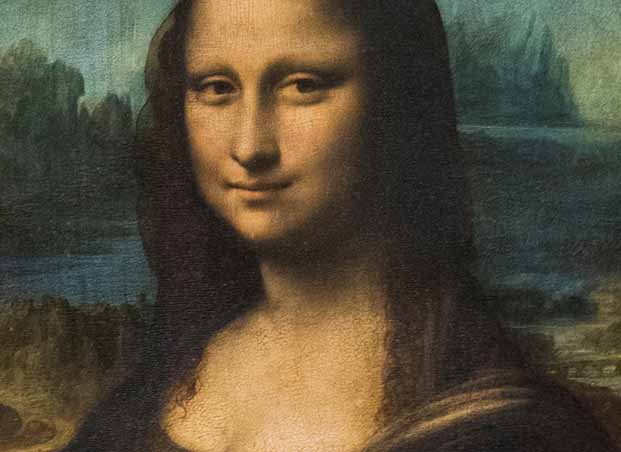
L’artista rivoluzionario sperimentò nuovi metodi di pittura ad olio chiamati “Sfumato.” È una tecnica in cui l’artista fonde strati di pittura ad olio per creare un effetto nebbioso, onirico. Leonardo ha creato un senso realistico di profondità e volume combinando morbide pennellate “fumose” con colori chiari e scuri (chiaroscuro). Guardate da vicino lo sfondo della Gioconda, e vedrai questa tecnica. Leonardo usava anche questo modo di dipingere morbido e fumoso per sfumare leggermente gli angoli della bocca di La Giocanda in modo che il sorriso sembrasse contemporaneamente presente e assente. Questo crea un senso di mistero e intrigo ed è diventato uno degli aspetti più iconici della pittura di Leonardo.
The revolutionary artist experimented with new oil painting methods called “Sfumato.” It is a technique in which the artist blends layers of oil paint to create a foggy, dreamlike effect. Leonardo created a realistic sense of depth and volume by combining soft “smoky” brush strokes with light and dark colors (chiaroscuro). Look closely at the background of the Mona Lisa, and you will see this technique. Leonardo also used this soft smokey way of painting to slightly blur the corners of La Giocanda’s mouth so that the smile simultaneously seems present and absent. This creates a sense of mystery and intrigue and has become one of the most iconic aspects of Leonardo’s painting.
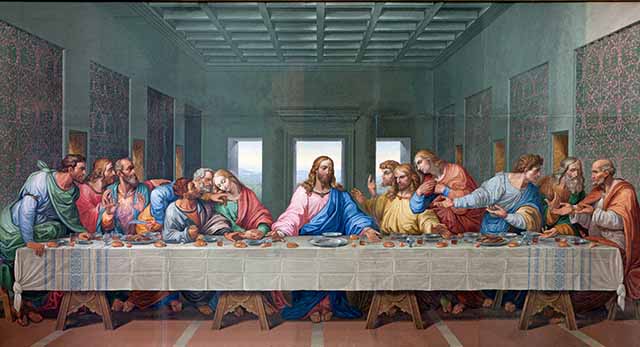
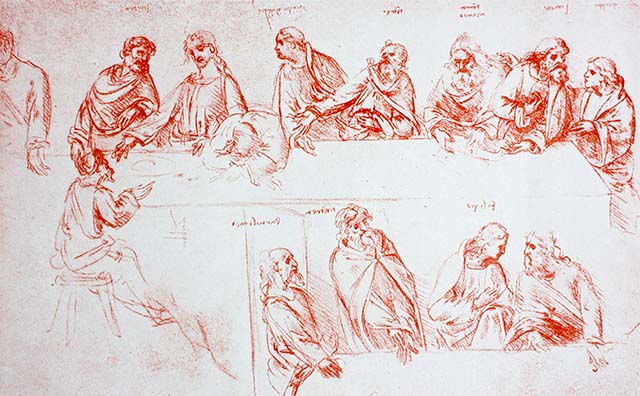
L’artista vedeva l’arte come un processo continuo di esplorazione e scoperta. Una volta disse: “L’arte non è mai finita, solo abbandonata.” Poiché era ossessionato dalla perfezione, Leonardo spesso lasciava i suoi dipinti incompiuti. Il Cenacolo, infatti, è una delle sue opere incompiute più famose; Mentre lavorava a questo affresco, Leonardo era così assorto nel suo lavoro che a volte si dimentica di mangiare o dormire. Trascorre ore studiando i volti dei suoi soggetti, cercando di catturare nel dettaglio le loro emozioni ed espressioni.
The artist saw art as an ongoing process of exploration and discovery. He once said, “Art is never finished, just abandoned.” Because he was obsessed with perfection, Leonardo often left his paintings unfinished. Il Cenacolo, or “The Last Super” is one of his most famous unfinished works; while working on this fresco, Leonardo became so absorbed in the painting that he sometimes forgot to eat or sleep. He spent hours studying the faces of his subjects, trying to capture their emotions and expressions in detail.
Ecco di più della saggezza di Leonardo
Here is more of Leonardo’s wisdom
Cerca le divine proporzioni che sono in tutte le naturali cose.
Seek the divine proportions that are in all natural things.
Un pittore è padrone di tutte le cose che poteva immaginare.
A painter is the master of all things he can imagine.
Non chi comincia, ma quel che persevera. Solo chi persevera ottiene risultati, nell’istruzione e nell’arte. Anche se Leonardo non ha terminato molte delle sue opere, l’essere di Leo non ha mai smesso di persevera.
It is not who begins but who perseveres. Only those who strive will obtain results in education and art. And although Leonardo did not finish many of his works, the true essence of Leonardo was to continue experimenting and evolving.
La solitudine non manca vantaggi. Chi è solo, è tutto suo.
Keeping your own company does not lack advantages. He who is alone has everything to himself.
Non nascondere i tuoi lavori. Metti in mostra per condividere le tue idee.
Don’t hide your work. Showcase what you have created and share your ideas with others.
Sii innovativo e vai controcorrente. Invece di seguire gli altri, vai nella direzione opposta. Anche un pesce morto segue la corrente. Ci vuole un pesce vivo e attivo per nuotare controcorrente.
Be innovative. Instead of following others, go in the opposite direction. Even a dead fish follows the current. It takes a live and active fish to swim against the tide.
Ascolta pazientemente le critiche. Considera sempre se coloro che ti criticano hanno ragione o meno. In tal caso, correggi questi errori. In caso contrario, comportati come se non capissi cosa hanno detto.
Listen to criticism patiently. Always consider whether or not those who find fault with you are right. If so, correct these faults. If not, act as if you did not understand what they said.
Sii originale. Non imitare gli altri; ma solo la natura.
Be original. Don’t imitate others; only imitate nature.
Domanda sempre. Le domande sono più importanti delle risposte.
Question always. Questions are more important than answers.
Sii curioso. La curiosità dovrebbe essere la forza trainante che ti guida.
Be curious. Curiosity should be the force that drives you.
Non hai paura di sbagliare. Si vive imparando. Si impara vivendo. Si cresce sbagliando.
Do not be afraid of making mistakes. You live by learning. You learn by living. You grow by your mistakes.
Imparare non è un obblio. È una necessità. Si impara facendo cose, si impara risolvendo problemi.
Learning is not an obligation. It is a necessity. You learn by doing things; you learn by solving problems.
Tieni il cervello attivo. Come il ferro arrugginisce dalla mancanza di uso, come l’acqua va male se stagnante o con il freddo diventa ghiaccio, così l’ingegno senza esercizio si guasta.
Keep your brain active. As iron rusts from lack of use, as water goes bad if stagnant or with the cold becomes ice, ingenuity stalls out and becomes stale without exercise.
Cerca la semplicità. La semplicità è il massimo della sofisticazione.
Keep things simple. Simplicity is the ultimate in sophistication.
Correggi l’amico in segreto e lodalo davanti agli altri.
Correct your friend in secret and praise him in front of others.
Cerca gioia e amore nella vita. L’amore è il rifiuto dell’odio e ci dà la giovinezza eterna.
Seek joy and love in life. Love is the rejection of hatred and gives us eternal youth.
Ogni domani è importante per incontrare nuova gente e vivere nuove e importante storie.
Every tomorrow is an important opportunity to meet new people and live new and important stories.
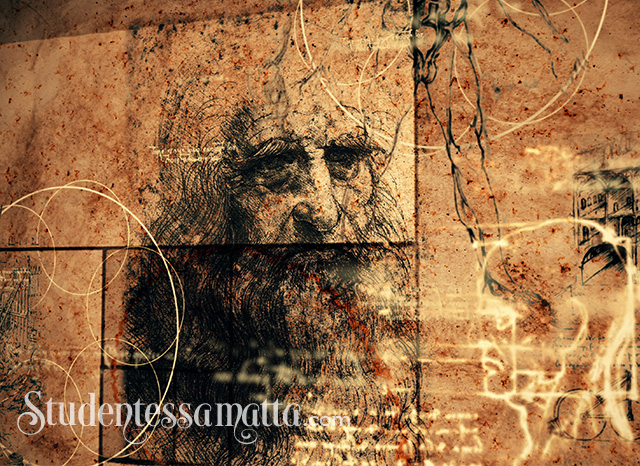
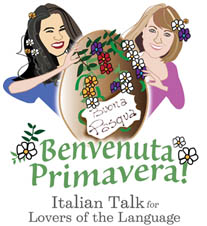

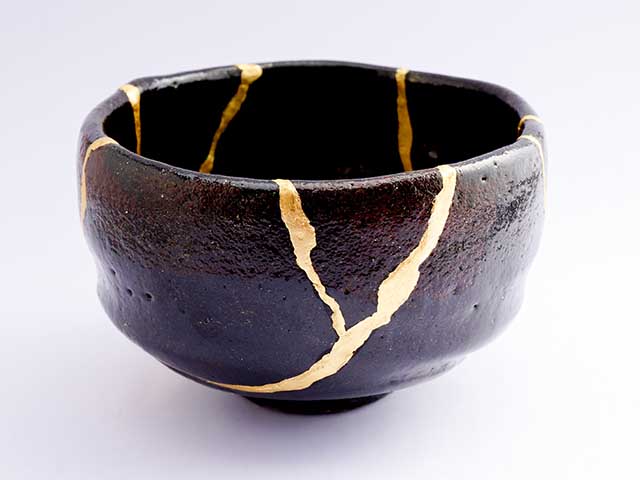
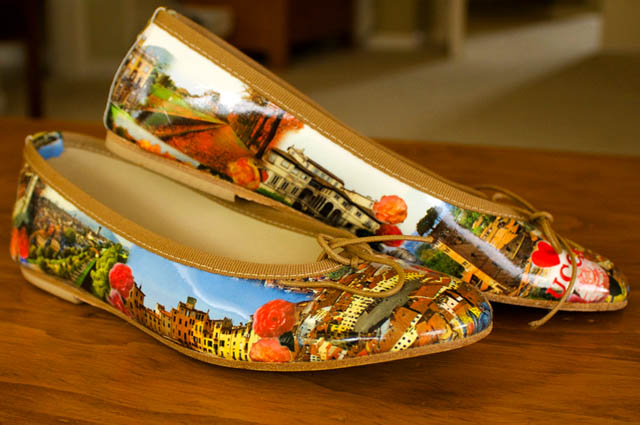
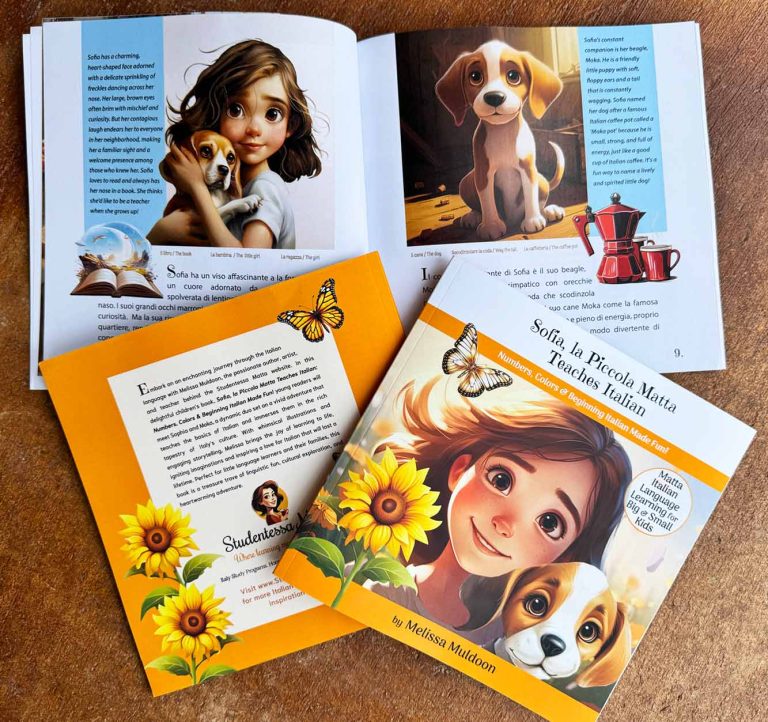
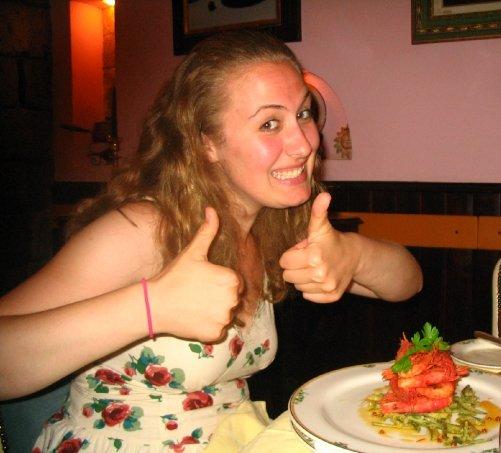






Wonderful blog post! Da Vinci had the greatest mind of all time, a true genius whose talents spanned the entire spectrum of art and science. My visit to the town of Vinci years ago opened my eyes. The little museum there had dozens and dozens of tiny models of devices and machines that da Vinci had sketched, items as diverse as a machine to dredge a hole and make a tall pole stand upright, to an armored tank that could turn in any direction. His mind had no boundaries. Thank you for this article that taught me more about the GOAT.
Ciao Marci! Leonardo è un’artista meraviglioso. I was inspired to write this piece after visiting Il Cenecolo in Milano last October. I’ve meant to post it for a while and finally sat down and did so last week. I have to confess I didn’t know what GOAT meant and had to look it up [The acronym G.O.A.T. stands for “greatest of all time,” especially used to praised exceptional athletes but also artits and musicians]
This year my group in Lucca will go to Vinci to see Leonardo’s museum and birthplace! We will also visit Cerreto Guidi the Medici Hunting Villa where Isabella de Medici was murdered by her husband!
Happy travels and look forward to meeting up with you again in Italy soon!